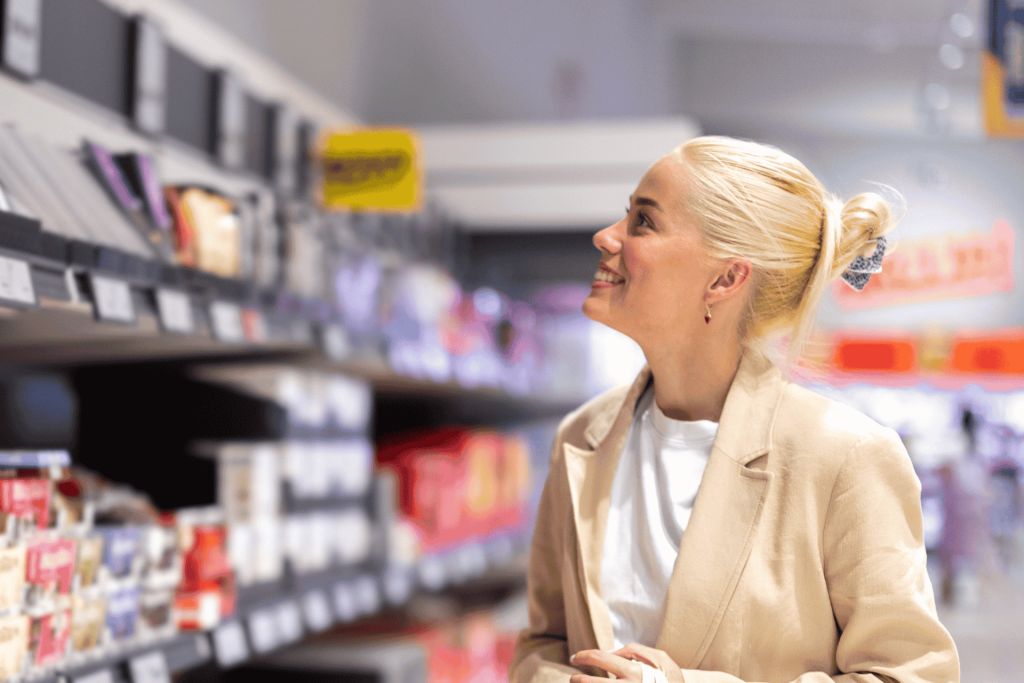The rise of ecommerce and its impact on retail media
The explosive growth of ecommerce has been a significant driver behind the rise of retail media. With more consumers shopping online, retailers have an unprecedented amount of data on customer preferences, purchasing behavior, and shopping habits. This data is a goldmine for CPG brands looking to target their audience more effectively.
Retailers like Amazon, Walmart, and Target have developed sophisticated retail media networks, offering advertising solutions that leverage their extensive customer data. This allows CPG brands to place ads directly on retail platforms, ensuring that their products are seen by shoppers at the moment of purchase decision-making.
The proprietary data retailers own is also valuable to any number of other actors interested in it, including other CPGs. A bed manufacturer, for instance, could be interested in data on shoppers who buy products touted for their sleep enhancement properties.
The power of first-party data
One of the most compelling reasons for the growth of retail media is the access to first-party data. First-party data is collected directly from consumers by the retailer, which means it is highly accurate and specific. This data includes information about browsing behavior, purchase history, and even real-time shopping patterns.
For CPG brands and others, leveraging this first-party data means they can create highly targeted and personalized advertising campaigns. Unlike third-party data, which can be fragmented and less reliable, first-party data provides a clear and comprehensive view of the consumer, leading to more effective marketing strategies.
Changing consumer behavior
Consumer behavior has shifted significantly in recent years, especially with the increased reliance on digital platforms for shopping. Today’s consumers expect a seamless and personalized shopping experience, whether they are browsing online or in-store. Retail media allows CPG brands to meet these expectations by delivering relevant ads that resonate with shoppers.
Personalization is key to capturing consumer attention and loyalty. With retail media, CPG brands can tailor their messaging to individual consumers, offering promotions, discounts, and product recommendations that are directly relevant to their needs and preferences.
The decline of third-party cookies
The decline of third-party cookies has also played a crucial role in the growth of retail media. With major browsers phasing out third-party cookies, advertisers are facing challenges in tracking and targeting consumers across the web. Retail media networks, however, do not rely on third-party cookies. Instead, they use first-party data collected directly from their customers as they shop the digital shelf.
This shift has made retail media an attractive option for CPG brands looking to maintain effective advertising strategies in a cookieless world. By partnering with retailers, brands can continue to reach their target audience without the limitations imposed by the decline of third-party cookies.
Measuring the ROI of retail media
Another reason why retail media is growing is its ability to provide measurable ROI. Traditional advertising channels often struggle with proving their effectiveness and justifying the investment. Retail media, on the other hand, offers clear metrics and analytics that demonstrate the impact of advertising efforts.
Retail media networks provide detailed reports on ad performance, including impressions, clicks, conversions, and sales data. This transparency allows CPG brands to understand the return on their advertising spend and make data-driven decisions to optimize their campaigns.
Enhancing the shopper experience
Retail media not only benefits CPG brands but also enhances the overall shopper experience. By integrating relevant ads into the shopping journey, retailers can offer valuable information and promotions that assist consumers in making informed purchasing decisions.
For example, a shopper browsing for skincare products might see ads for complementary items or receive personalized product recommendations based on their past purchases. This not only drives sales for CPG brands but also creates a more engaging and helpful shopping experience for the consumer.
The growing investment in retail media
As the benefits of retail media become more apparent, investment in this advertising channel continues to grow. According to eMarketer, US digital retail media ad spending is projected to reach $61.15 billion by 2024. This rapid growth is a testament to the effectiveness and value that retail media brings to both retailers and CPG brands.
Retailers are continuously enhancing their media networks, offering more sophisticated targeting options, better analytics, and new ad formats. This ongoing innovation is attracting more CPG brands to allocate a larger portion of their advertising budgets to retail media.
Retail media is undoubtedly on the rise, driven by the growth of ecommerce, the power of first-party data, and the changing landscape of digital advertising. For CPG brand manufacturers, embracing retail media is not just an option but a necessity to stay competitive in today’s market.
By leveraging the unique advantages of retail media, CPG brands can create highly targeted, personalized, and effective advertising campaigns that resonate with consumers and deliver measurable results. As investment in retail media continues to grow, those who adopt this strategy early will be well-positioned to thrive in the evolving retail landscape.




